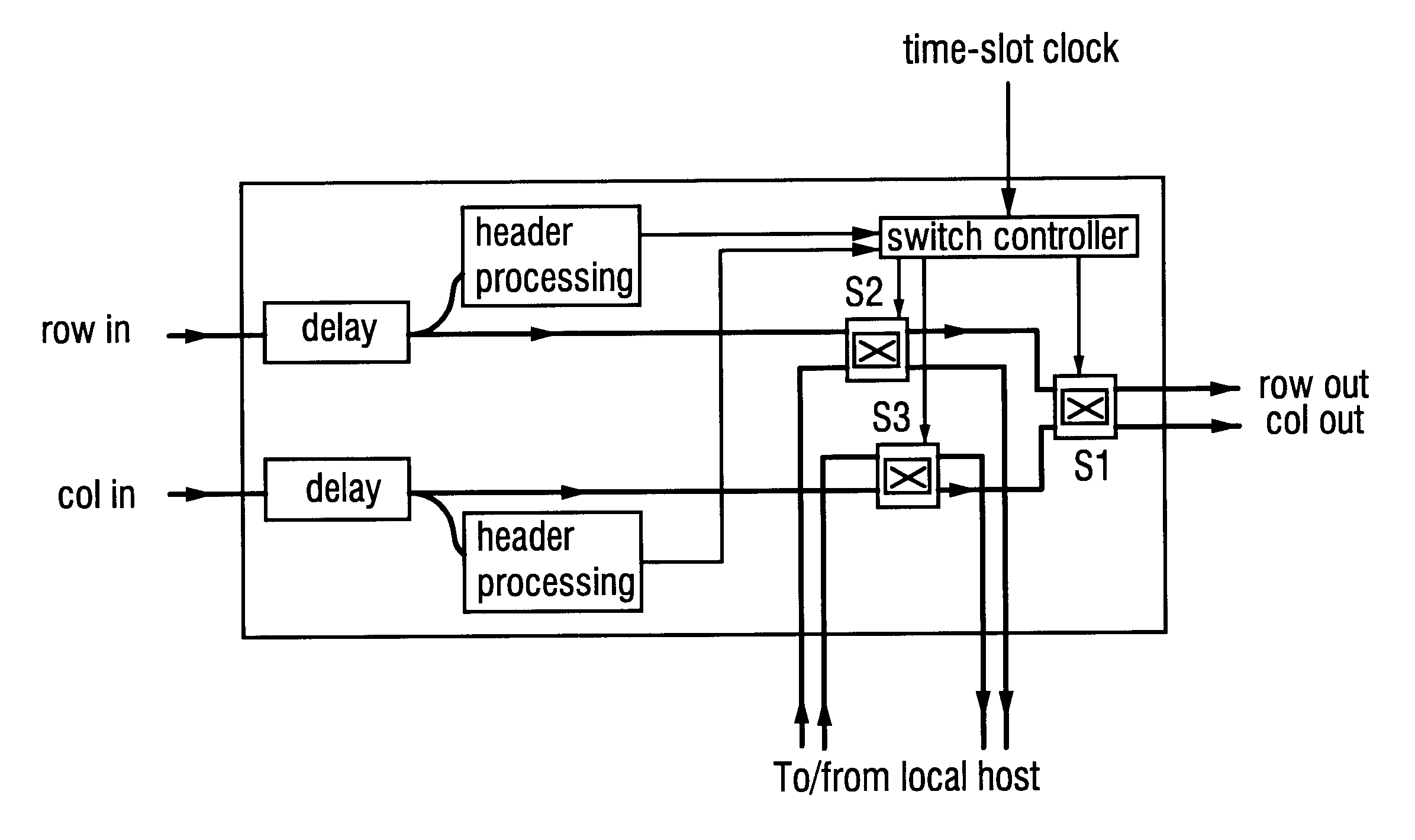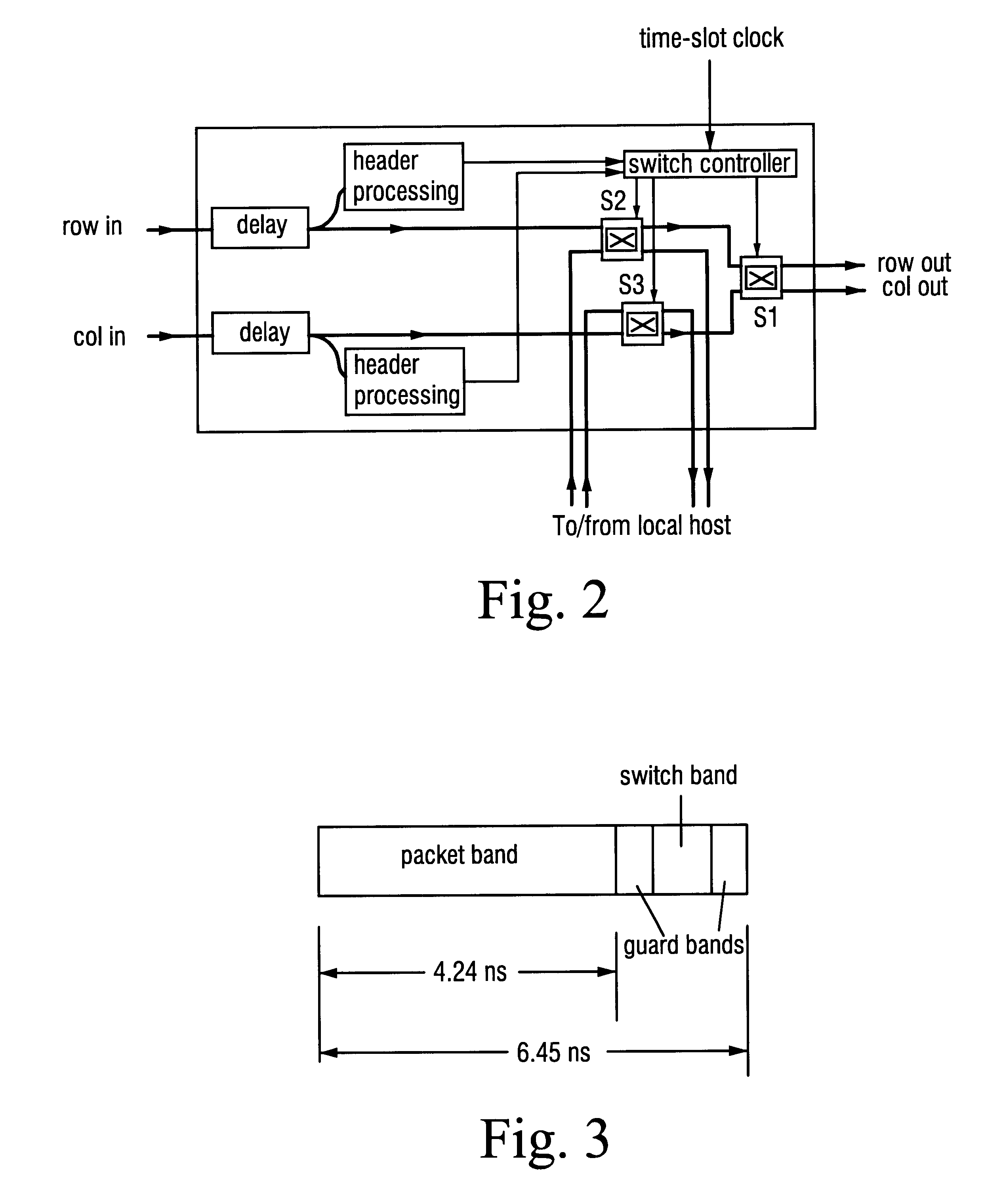Communications network
- Summary
- Abstract
- Description
- Claims
- Application Information
AI Technical Summary
Benefits of technology
Problems solved by technology
Method used
Image
Examples
Embodiment Construction
With reference to FIG. 1, an optical communications network comprises a LAN 1 linking a number of personal computer workstations 3. Each workstation is connected to the LAN via a network interface 3a. The workstations and LAN together provide a visualisation of complex data. Each workstation is connected to a respective node 2 of the network. Packets of data 4 are communicated between the workstations 3 via the nodes 2 and links 5. In this example, the links 5 are formed from optical fibre and transmit the packets 4 in the optical domain.
Although, for ease of illustration, only a few nodes are shown in the FIGURE, in practice, the network may comprise many hundreds of nodes.
In this first example, the nodes and the interconnecting fibres are configured as an n.times.n torus network.
The n.times.n torus network is a regular network with unidirectional links, and the nodes have indegree and outdegree of 2. Logically, the links form a grid on the surface of a torus, and all the links in ...
PUM
 Login to View More
Login to View More Abstract
Description
Claims
Application Information
 Login to View More
Login to View More - R&D
- Intellectual Property
- Life Sciences
- Materials
- Tech Scout
- Unparalleled Data Quality
- Higher Quality Content
- 60% Fewer Hallucinations
Browse by: Latest US Patents, China's latest patents, Technical Efficacy Thesaurus, Application Domain, Technology Topic, Popular Technical Reports.
© 2025 PatSnap. All rights reserved.Legal|Privacy policy|Modern Slavery Act Transparency Statement|Sitemap|About US| Contact US: help@patsnap.com



